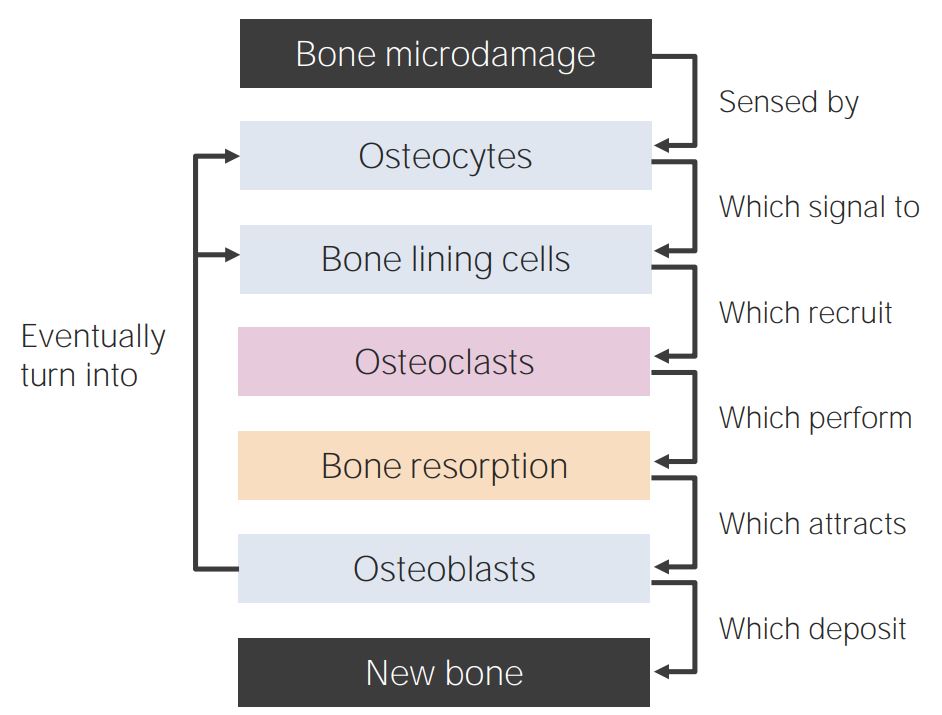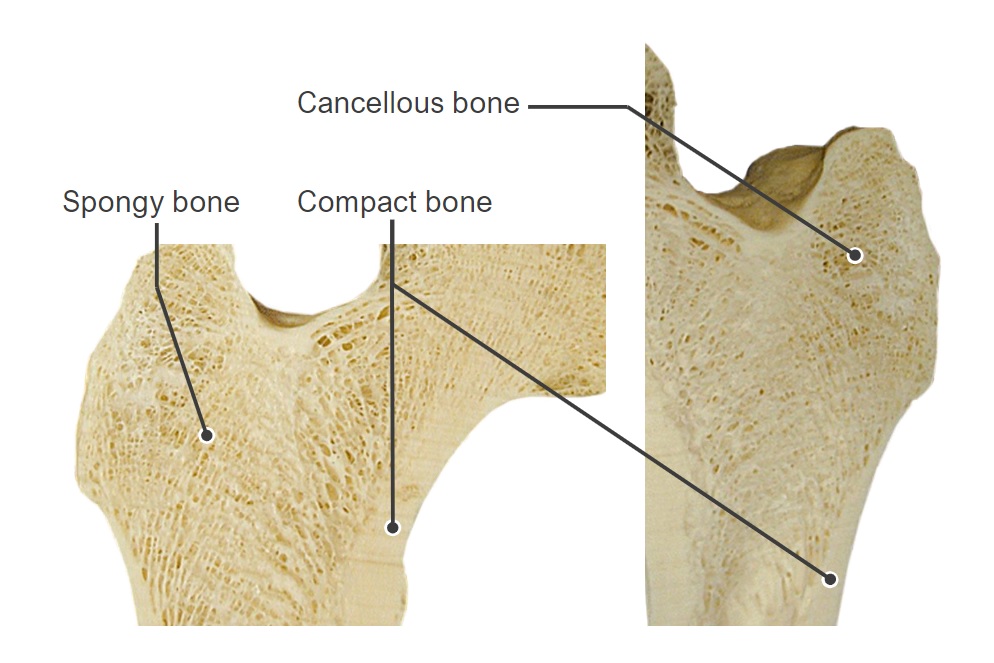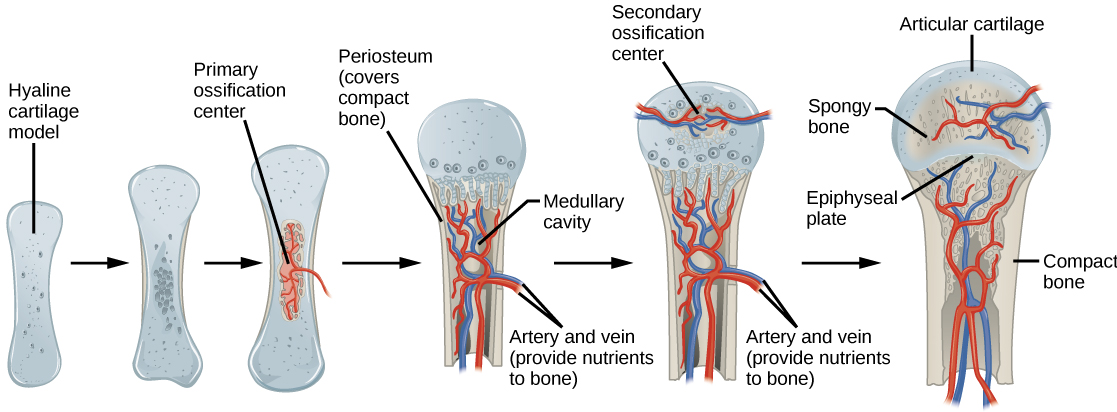Playlist
Show Playlist
Hide Playlist
Bony Anatomy and Bony Density
00:01 So let's talk a little bit about bony abnormalities and fractures. 00:04 Of all of the different x-rays that you take a look at, fractures are probably one of the most commonly encountered findings. 00:10 Let's start off with this case. 00:14 Take a look at the findings here and keep these in mind as we go through the lecture and then we'll come back to it in the end. 00:20 So when you're imaging bones, the images are best evaluated in at least 2 different projections and again it's because you're taking a look at a 3D structure using a 2D image. 00:32 If the radiograph isn't telling you what you need to hear, then you further evaluate this with CT or MRI. 00:39 MRI is also very useful in visualizing the sorrounding soft tissues. 00:43 So let's first review some bony anatomy. 00:48 Here we have a diagram and an x-ray of the femur. 00:51 You can see here that the bone has what's called an epiphysis which is at the very tip of it. 00:57 The next portion of the bone is called the metaphysis and then the longer portion of the bone is called the diaphysis. 01:04 On the x-ray, you can see that the epiphysis will be the very top of the femoral head. 01:09 This entire portion is then the metaphysis and then again the longer portion or the shaft is called the diaphysis. 01:17 Within the shaft, you have the cortex and then you have the medullary cavity in the middle. 01:23 So the cortical bone or the cortex appears more dense or more white than the grayish center which is the medullary cavity. 01:31 Bone density refers to the whiteness of the bone as it's seen on the radiograph. 01:38 It can either be focally or diffusedly increased or decreased in density by a lot of different pathologic processes. 01:44 Common causes of density changes include metastases which can either be focal or diffused. 01:51 You can have Paget's disease which can also be focal or diffused or you can have a avascular necrosis. 01:56 Other causes of decreased density includes again metastases and it depends on whether the metastasis is lytic or blastic, so if it's a blastic metastasis that usually results in increased density. 02:08 If it's a lytic metastasis, that will result in decreased density. 02:12 Osteopenia can also be focal or diffused and that results in a decreased density of the bone. 02:17 Multiple myeloma is another cause and osteomyelitis. 02:21 So let's take a look at this case. 02:24 Again, we're focusing on the bony structures here. 02:26 So can you see the difference between the images that was obtained 4 years ago and then the same patient, the image that's obtained currently? So these are the areas that look a little bit different. 02:44 You have an increase in density here within the lower lumbar spine. 02:48 You have an increase in density with in the lower iliac bone and then you have an increase in density in the inferior pubic ramus when compared with the prior. 02:58 This patient ended up having a bone scan and if you remember, areas of increased bone turnover are the ones that light up on a bone scan. 03:06 So taking a look at this image here, this is the frontal image. 03:10 You can see that the areas that showed increased density on the radiograph now have increased uptake on this bone scan. 03:16 So we have the lower lumbar spine, we have the iliac crest and then we have the inferior pubic ramus. 03:23 Again, remember that this is normal activity within the bladder and then the images on the right are inverted images to help you visualize these findings a little bit better. 03:32 So this patient actually has prostate cancer metastases. 03:35 The areas of increased sclerosis that you see involving the left iliac bone, the lower lumbar spine and the inferior pubic ramus all represent areas of blastic metastasis and the bone scan shows uptake in each of these areas. 03:48 So let's discuss avascular necrosis. 03:51 Avascular necrosis is bony ischemia that results in cellular death and necrosis. 03:57 It causes collapse of the affected bone and radiograph demonstrates an area of sclerosis or increased density associated with it. 04:05 This is actually a coronal MRI image and you can see the findings in the left femoral head. 04:11 There's an area of hypointensity which reflects avascular necrosis. 04:17 So this is a radiograph. How can you describe these findings? This is again an example of the left femoral head and the arrow points to the abnormalities. 04:27 So there's increased sclerosis in the superior aspect of the femoral head. 04:33 There's also what we call the crescent sign which is a linear lucency indicating subchondral fracture. 04:39 This is also a very common sign seen in avascular necrosis. 04:43 Let's now take a look at this lateral view of the skull. 04:47 What do you see here? This is an example of multiple myeloma. 04:58 So you have multiple low density well circumscribed lesions throughout the skull. 05:03 This is a very typical appearance of multiple myeloma and is called the "punched out" appearance. 05:08 Lytic metastases can actually look very similar but they're usually fewer in number. 05:13 And let me just point out some of these abnormalities, so you can see here multiple lucent lesions of all different sizes and kind of scattered all throughout. 05:23 So multiple myeloma is primary bone malignancy. 05:27 It can cause either a single lytic lesion called a "plasmacytoma" or it can cause what we just saw multiple lytic lesions and a punched out appearance. 05:36 This is an example of a plasmacytoma or a single lucent lesion and this is within the right humeral head.
About the Lecture
The lecture Bony Anatomy and Bony Density by Hetal Verma, MD is from the course Musculoskeletal Radiology.
Included Quiz Questions
Which of the following statements is NOT true about multiple myeloma?
- Bone lesions secondary to multiple myeloma are similar to osteoblastic metastasis but are greater in number.
- It is a primary bone marrow malignancy.
- It can cause a single lytic lesion called plasmacytoma.
- It causes multiple low-density well-circumscribed lesions throughout the skull.
- A "punched out" appearance is very typical for multiple myeloma.
What is a cause of INCREASED density in the bones?
- Paget's disease
- Osteoporosis
- Osteopenia
- Multiple myeloma
- Osteomyelitis
Avascular necrosis…
- …causes collapse of the affected bone.
- …leads to decreased density on X-ray.
- …results in bony ischemia resulting from hyperplasia of the bone.
- …presents as a linear lucency indicating a subcapsular fracture.
- …causes a "punched out" appearance in the superior femoral head.
Customer reviews
5,0 of 5 stars
| 5 Stars |
|
5 |
| 4 Stars |
|
0 |
| 3 Stars |
|
0 |
| 2 Stars |
|
0 |
| 1 Star |
|
0 |







